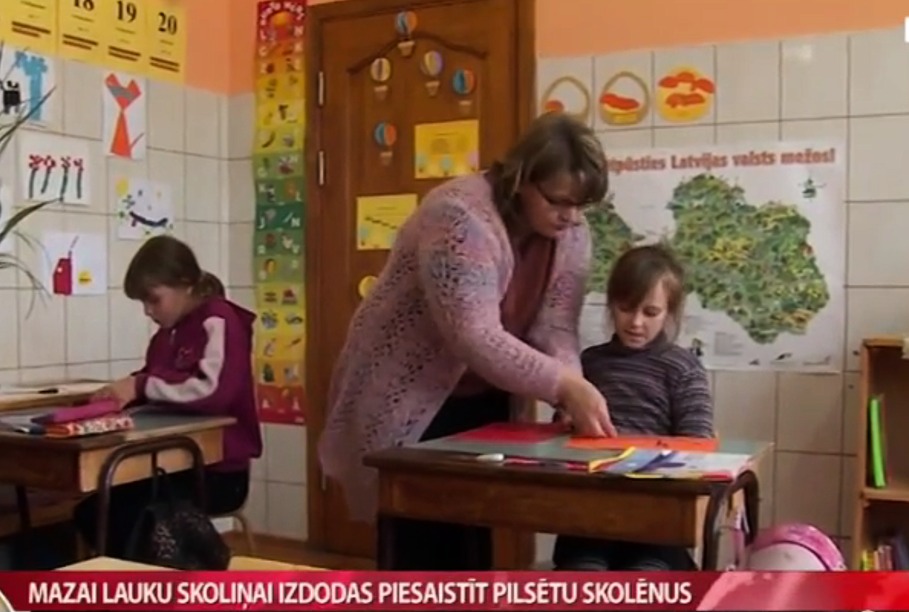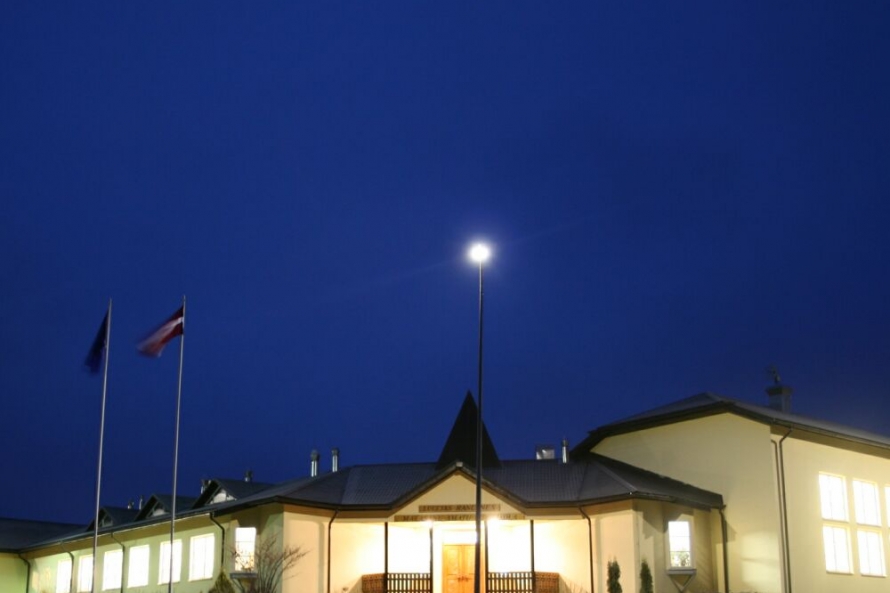There are 76 among Latvia’s more than 250 so-called ‘small’ schools where less than fifty pupils are enrolled. Small schools are defined as having a student body smaller than a hundred kids.
Latgale’s deep countryside is rife with small schools on the seeming edge of their very existence. At Dagda district’s Konstantinova Primary School, probably Latvia’s smallest school of all, where some classes are combined due to the lack of students, it will become a branch to a larger school in Dagda, local government official Marija Mickeviča told national information agency LETA.
Many of the schools have recently benefited from renovations and upgrades to equipment thanks to EU co-funding projects. Besides forfeiture of such infrastructural investments, the transportation of kids to more distant schools would pose challenges that have yet to be addressed.
Latgale Regional Television (LRT) reported Tuesday from Rēzekne district’s Tiskādi High School, which is getting ready to celebrate the 50th anniversary of its founding next fall. There are about 200 students enrolled here altogether, with high-school classes ranging between 10-15 kids per class.
The school’s assistant principal Elita Valenieka told LRT the two nearest upper-grade high schools in Malta and Viļāni otherwise are each fourteen kilometers away.
Most of the 8th and 9th graders questioned by LRT said they would rather go to school close to home, with friends they’ve known from childhood rather than with strangers in a town more than ten kilometers away.
District school board representative Vilis Deksnis told LRT the working group’s proposal is just one variant among many to be discussed, but admitted that the interests of rural schools are rarely taken into account in the government halls of Rīga.
“We’ve regularly nominated our candidates to the working groups, I was even on one for the ‘money follows the student’ principle where I was the only one ever raising any objection to this model,” he said. “Looking at the working group, there are the big city representatives but very, very few from rural local governments, at one point there was nobody there from the countryside,” he concluded.
Since 2009, when the financial crisis prompted the greatest effort towards optimizing the national network of schools, almost 100 educational establishments have been closed by the IZM. The largest flurry, however, came that year, since then only a handful have been closed in the past two years.
The 2014/2015 school year saw the registration of altogether 209,912 students, down almost 100,000 enrolled kids from a decade prior, when slightly more than 300,000 signed up for the 2004/2005 school year.
Latgale and Riga saw the greatest number of school closings during the past five years, but Latvia’s eastern province’s decline in its school-age population was especially precipitous – almost 40% fewer children enrolled in 2014 than in the previous decade.
However, not all of the stories from Latgale's school system are discouraging. At the Makašāni High School of Arts and Crafts ten kilometers outside of Rēzekne, local cultural activists from the Rancāne family have founded an alternative magnet school that attracts pupils from the provincial center as well as nearby towns like Gulbene and Lubāna, not to mention one or two from as far away as Rīga district.






























